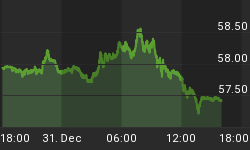The Federal Reserve estimates that in the past year losses in real estate, stocks and mortgages have sucked out some $7.2 trillion of wealth from the U.S. economy. Some are now putting the figure at $20 trillion. A massive recession is starting and will likely spread throughout much of the world. These forces have exerted their classic strong downward pressure on the price of gold.
In addition, the $700 billion TARP fund to salvage the American financial system, and large amounts spent by other governments to protect their own banks, has greatly reduced the fear of a financial breakdown. As a result, the financial panic insurance value of gold was largely eroded, adding further downward price pressure.
2008 was a volatile year for gold. Prices have gyrated quite violently between the $700's and $1,000, or by some 25 to 30 percent. This volatility alone acts as a depressing influence on gold prices as it discourages the belief that gold is a credible investment.
The world's major governments long have sought to eradicate gold as a monetary measure in order to remove the last vestiges of monetary discipline and to clear the field for massive government over-spending and inflation.
In 1968, the London Gold Poll was abolished. In 1978, America forced a further move, via the IMF, to write gold out of the international money supply. In August 1971, President Nixon broke the U.S. dollar-gold exchange link.
In September 1999, the United States, while being careful to keep its own gold stocks intact, led other major nations, in the first of two so-called 'Central Bank Gold Agreements' to flood the gold market with sales of gold.
In 1999, the central banks held some 33,000 tonnes, or one quarter of all mined gold. The effect of government gold sales was potentially very bearish for gold.
Gold market observers, who have studied the pattern of IMF gold sales, allege that the sales are timed to cause the maximum volatility in the price of gold, to discourage investment.
More recently, there are allegations that the Government has allowed certain institutions to engage in massive naked short selling of gold and silver. This has caused distortions in the gold price that do not reflect genuine market pressures. In short, they amount to market manipulation.
A fair conclusion is that gold is cheap and that its present price does not truly reflect market conditions.
On December 16th, the Fed announced, as we have long forecast, a further cut in interest rates to between zero and 0.25 percent. It also announced 'unlimited' support to buy assets from beleaguered institutions.
The amount of debt and new money injected into the economy should progressively raise inflation alarm bells. The fire of future inflation is being stoked alarmingly, but the recessive forces of deleveraging are concealing it temporarily.
The Fed looks desperate. This could lead to feelings of panic and upward pressure on the gold price.
Investors should also especially be concerned as to who will repay these massive debts. The conventional answer of politicians is "taxpayers". But this is a serious understatement. Any depreciation of the U.S. dollar means that every American citizen and every single holder of U.S. dollars throughout the world will suffer from monetary loss and a severely reduced standard of living.
In 1934, facing a depression President Roosevelt first confiscated gold from every American. Then, he unilaterally devalued the U.S. dollar by 75 percent against gold.
At a stroke, FDR wiped out 75 percent of the dollar denominated debt of the U.S. Treasury.
As both President-Elect Obama and Fed chairman Bernanke are students of FDR, we face the real possibility of a massive devaluation of the U.S. dollar against gold in 2009.
For a more in-depth analysis of our financial problems and the inherent dangers they pose for the U.S. economy and U.S. dollar, read Peter Schiff's just released book "The Little Book of Bull Moves in Bear Markets." Click here to order your copy now.
For a look back at how Peter predicted our current problems read the 2007 bestseller "Crash Proof: How to Profit from the Coming Economic Collapse." Click here to order a copy today.
More importantly, don't wait for reality to set in. Protect your wealth and preserve your purchasing power before it's too late. Discover the best way to buy gold at www.goldyoucanfold.com. Download Euro Pacific's free Special Report, "The Powerful Case for Investing in Foreign Securities" at www.researchreportone.com. Subscribe to our free, on-line investment newsletter, "The Global Investor" at http://www.europac.net/newsletter/newsletter.asp.
















